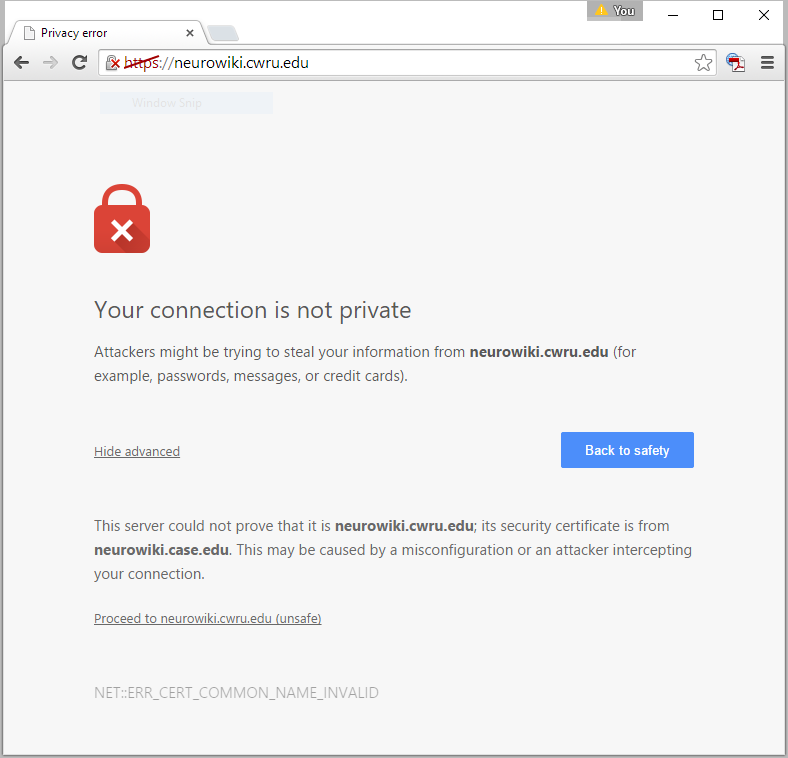HTTPS & SSL¶
Web browsers can make insecure (HTTP) or secure (HTTPS) connections to websites. Since the wiki requires passwords, it should be set up to use HTTPS.
When a web browser tries to create an HTTPS connection with a website, it requests to see an SSL certificate that proves the server it is talking to is the real deal. If the server can’t provide one that matches the address the web browser is trying to connect to, the web browser will warn the user that something is wrong.
For example, although https://neurowiki.cwru.edu is a perfectly valid alias for https://neurowiki.case.edu, a browser visiting the former should warn the user that the connection is not secure, preventing them from visiting it unless they click through some warnings. Here’s what Chrome does when I visit that address:

The SSL certificate we obtained from the university for that virtual machine
certifies that our site is neurowiki.case.edu, but not
neurowiki.cwru.edu. Lacking an appropriate SSL certificate does not prevent
people from using the site (i.e., in Chrome, I could click “Proceed to
neurowiki.cwru.edu (unsafe)”), but your visitors will likely be scared away, or
at least inconvenienced, if it’s absent.
As described in Port Forwarding & Bridged Networking, when a virtual machine is using port forwarding, it is accessed using an address like https://dynamicshjc.case.edu:8014. For this reason, the virtual machine needs to present DynamicsHJC’s SSL certificate while it is using port forwarding. When it is switched to bridged networking, it is accessed at an address like https://neurowiki.case.edu, so it must present a different SSL certificate. When the virtual machine is cloned and moved to https://neurowikidev.case.edu, it must present another different SSL certificate.
Instructions for creating and renewing SSL certificates can be found in SSL Certificate Management.